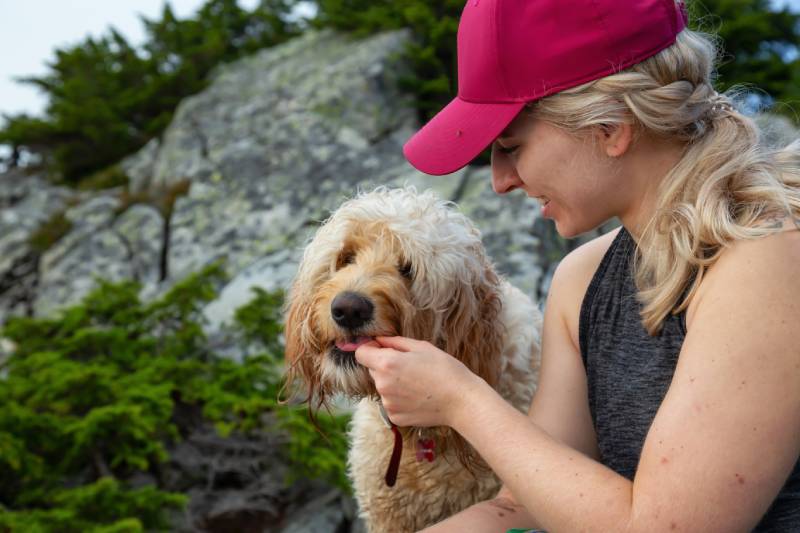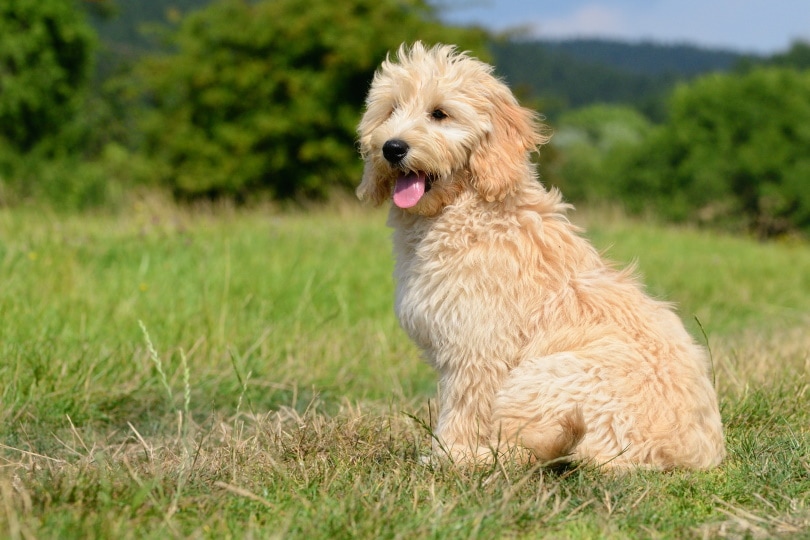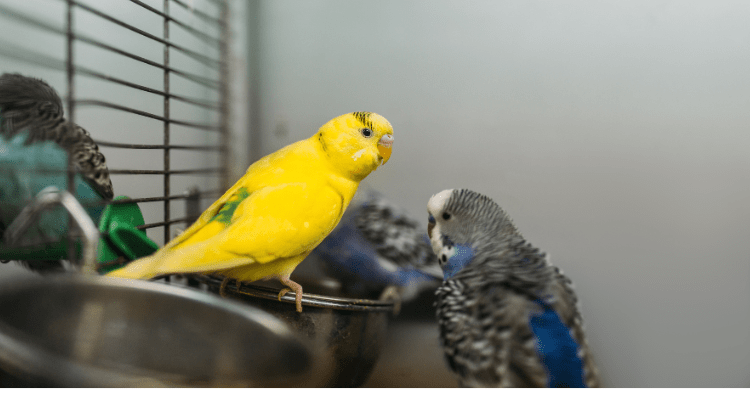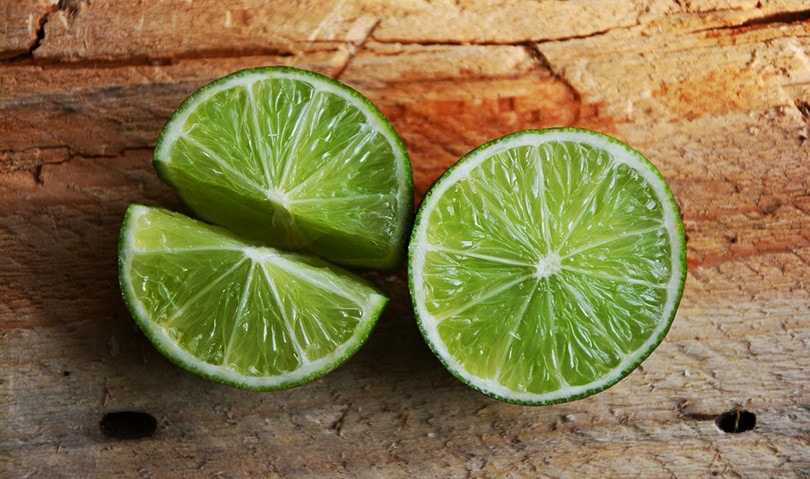Click Below to Skip Ahead
Goldendoodles are a delightful blend of the friendly and loyal Golden Retriever and the intelligent and hypoallergenic Poodle. Their charming characteristics have made them a beloved choice for many pet owners around the world. Whether you’re a fan of their adorable appearance, their joyful and easy-going temperament, or their typically low-shedding coats, there’s a lot to love about Goldendoodles.
One common question prospective owners have is about their size – how big does a Goldendoodle get?
Mini Goldendoodles can grow to 15–30 pounds and 13–20 inches, Medium Goldendoodles will be around 30–45 pounds and 17–20 inches, and Standard Goldendoodles can reach 50–90 pounds and 20–24 inches.
This article will delve into everything you need to know about Goldendoodle sizes, growth patterns, and factors that can influence their size.

Goldendoodles Breed Overview
The Goldendoodle is a charming crossbreed that first emerged in the 1990s, quickly winning the hearts of pet owners worldwide. This breed is a mix between a Golden Retriever and a Poodle, inheriting the best traits from both parents.
Goldendoodles are known for their friendly and affectionate nature, making them excellent companions for families, singles, and seniors alike. They possess the intelligence and trainability of the Poodle, coupled with the sociable and eager-to-please demeanor of the Golden Retriever.
These dogs come in three sizes: miniature, medium, and standard, each with its own unique characteristics. Their coats can be wavy, curly, or straight, coming in a variety of colors, including cream, gold, red, black, brown, and gray.
Goldendoodles are also popular for their hypoallergenic qualities, making them suitable for people with allergies. While no breed can be guaranteed to be completely hypoallergenic, Goldendoodles tend to shed less and produce fewer allergens compared to many other breeds.
In terms of health, Goldendoodles are generally robust and have a lifespan of 10 to 15 years. However, like all breeds, they can be prone to certain genetic conditions, such as hip dysplasia and certain heart diseases. Regular vet check-ups and a healthy diet and lifestyle can help ensure your Goldendoodle lives a long, happy life.
With their irresistible charm, intelligence, and low-shedding coats, it’s no wonder that Goldendoodles continue to be a favorite choice among dog lovers.
Goldendoodles Size and Growth Chart

Goldendoodles come in various sizes, largely depending on the size of their Poodle parent. Their size and growth can typically be classified into three categories: Miniature, Medium, and Standard.
| Size | Weight | Height | Age When Fully Grown |
| Mini Goldendoodle | 15–30 pounds | 13–20 inches | 7.5–11 months |
| Medium Goldendoodle | 30–45 pounds | 17–20 inches | 11–13 months |
| Standard Goldendoodle | 50–90 pounds | 20–24 inches | 12.5–16 months |
These are just general ranges, and individual Goldendoodles can vary. Factors such as diet, exercise, genetics, and overall health care can influence a Goldendoodle’s growth and size. For a more accurate prediction of a puppy’s adult size, it’s best to look at the parents’ size and the puppy’s current weight and age.
When Does a Goldendoodle Stop Growing?
Most Goldendoodles stop growing between 11 and 16 months of age. However, some larger standard Goldendoodles may continue to grow until they are up to 2 years old. It’s important to note that while their physical growth may stop, they continue to develop mentally and emotionally for many more years.

Factors Affecting the Size of a Goldendoodle
Several factors can affect the size of a Goldendoodle. Genetics play a significant role – the size of the Poodle parent in particular can greatly influence the size of the Goldendoodle. Nutrition and overall health also have an impact on a dog’s growth and development.

Ideal Diet for Maintaining a Healthy Weight
Maintaining a healthy weight is crucial for a Goldendoodle’s overall health and wellbeing. Their diet should be high-quality dog food appropriate for their life stage (puppy, adult, senior), size, and activity level. Treats should only make up 10% of their total diet. Regular exercise is also essential for keeping your Goldendoodle at a healthy weight.
How to Measure Your Goldendoodle
To measure your Goldendoodle, start by measuring their height. You can do this by making them stand straight and measuring from the floor to their shoulder. Next, measure their length from the base of the tail to the tip of their nose.
Lastly, weigh them using a pet or human scale. If you can get your dog to sit directly on the scale, this is the easiest way to weigh them. You can also weigh yourself, then weigh yourself holding your dog and subtract the two weights to get your Goldendoodle’s weight.

Conclusion
Understanding your Goldendoodle’s growth and size can help you provide the best care for your pet. Remember, each dog is unique, and these are just general guidelines. Always consult with your vet about your Goldendoodle’s growth, diet, and health if you have any questions or concerns.
Featured Image Credit: anetapics, Shutterstock



